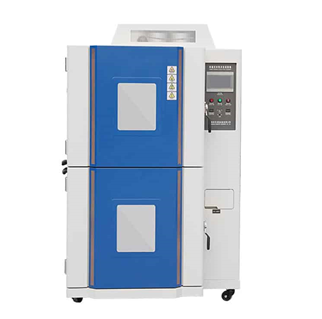
Humidity chambers play a crucial role in various industries, including aerospace and defense. These industries require stringent testing and evaluation of materials, components, and systems to ensure their reliability and performance in challenging environments. Humidity chambers provide controlled environments where researchers can simulate specific humidity conditions to assess the effects of moisture on various aerospace and defense applications. In this article, we will explore the applications of humidity chambers in the aerospace and defense industries, highlighting their importance and benefits.
Material Testing and Qualification:
Humidity chambers are extensively used in the aerospace and defense industries for material testing and qualification. These industries often operate in harsh environments where exposure to high humidity levels can affect the properties and performance of materials. By subjecting materials, such as composites, alloys, and coatings, to controlled humidity conditions within humidity chambers, researchers can evaluate their durability, resistance to moisture-induced degradation, and long-term performance. This testing helps in qualifying materials for aerospace and defense applications, ensuring their suitability and reliability in humid environments.
Electronics and Circuit Board Testing:
The aerospace and defense industries rely heavily on electronics and circuit board systems in various applications, including avionics, navigation systems, and defense equipment. These components must withstand high humidity conditions without compromising their performance and reliability. Humidity chambers provide controlled environments to subject electronic components and circuit boards to specific humidity conditions, simulating real-world scenarios. This testing helps in evaluating the effects of moisture and humidity on the functionality and lifespan of electronic systems, identifying potential issues such as corrosion, short circuits, and performance degradation.
Quality Control of Mechanical Components:
Mechanical components used in aerospace and defense applications need to withstand extreme humidity and environmental conditions. Humidity chambers are used for quality control testing of mechanical components such as valves, actuators, sensors, and bearings. By subjecting these components to controlled humidity conditions, researchers can assess their resistance to moisture-induced corrosion, wear, and degradation. This testing helps in ensuring the reliability and longevity of mechanical components, contributing to the overall performance and safety of aerospace and defense systems.
Environmental Testing of Aircraft and Vehicles:
Humidity chambers play a vital role in the environmental testing of aircraft and defense vehicles, ensuring their resilience and functionality under extreme humidity conditions. These chambers allow researchers to recreate humidity levels experienced during flights, in humid climates, or in marine environments. By subjecting aircraft components or entire vehicles to specific humidity conditions, researchers can evaluate their reaction to high moisture levels, including the effects on structural integrity, electrical systems, and surface coatings. This testing helps in identifying potential vulnerabilities and optimizing designs to enhance performance and durability.
Stress and Fatigue Testing:
Humidity chambers are used to perform stress and fatigue testing on aerospace and defense components. Humidity levels can impact the physical properties and behavior of materials under stress, leading to performance and reliability issues. By subjecting components to controlled humidity conditions while applying mechanical stress, researchers can assess their endurance, fatigue life, and resistance to moisture-induced degradation. This testing helps in identifying critical failure points, optimizing designs, and improving the long-term reliability of aerospace and defense systems.
Climate-Controlled Storage and Preservation:
Humidity chambers are also utilized for climate-controlled storage and preservation of aerospace and defense materials and equipment. These chambers provide controlled humidity conditions, which are critical for maintaining the integrity and functionality of sensitive components, ammunition, fuels, and other materials. By storing these items in humidity chambers, the risk of moisture condensation, corrosion, and degradation is minimized, ensuring their long-term storage and readiness for deployment.
Conclusion:
Humidity chambers are instrumental in the aerospace and defense industries for various applications, including material testing and qualification, electronics and circuit board testing, quality control of mechanical components, environmental testing of aircraft and vehicles, stress and fatigue testing, and climate-controlled storage. By simulating specific humidity conditions, these chambers enable researchers to assess the performance, durability, and reliability of materials, components, and systems in challenging and humid environments. The use of humidity chambers ensures that aerospace and defense industries can maintain the highest standards of quality, safety, and performance in their products and operations.














































